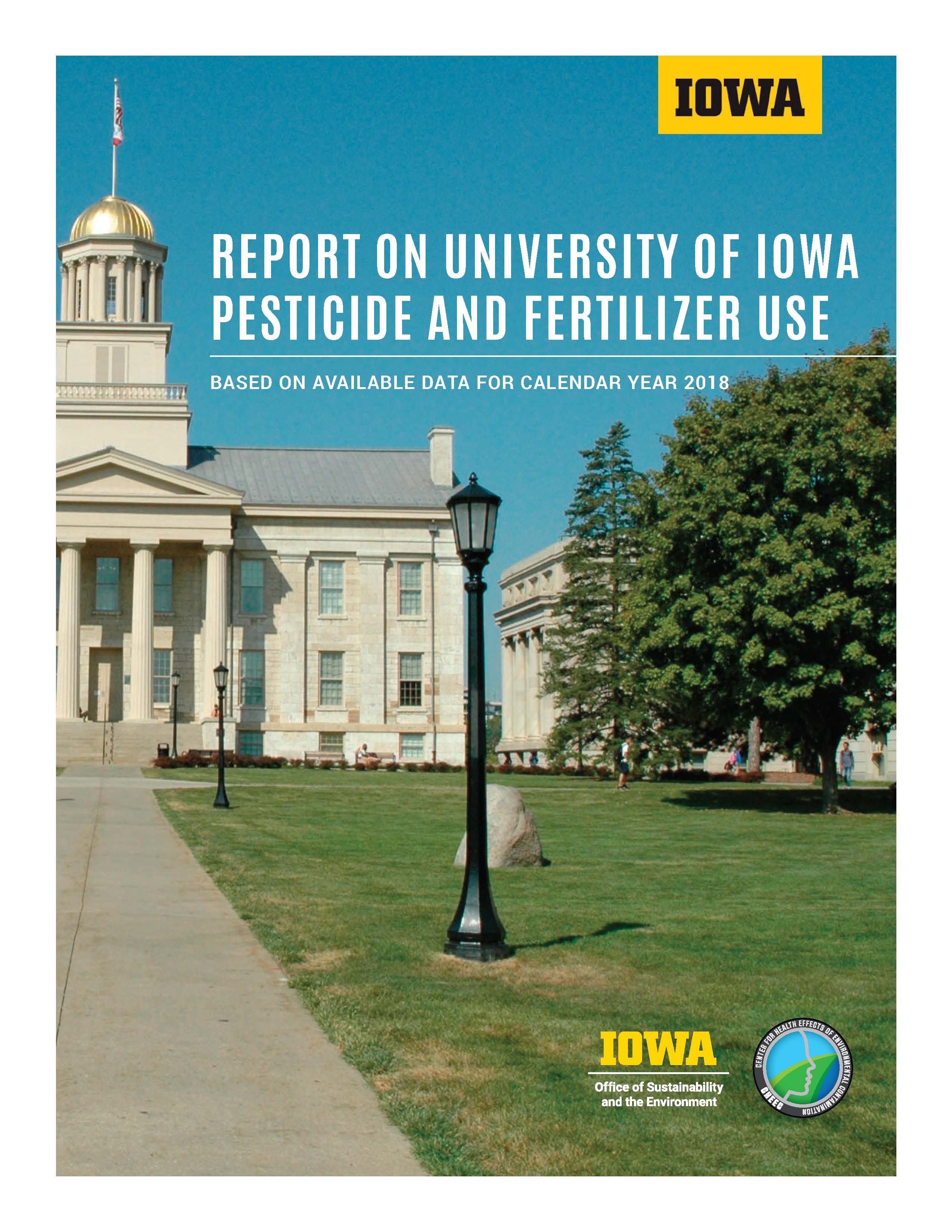CHEEC and OSE release report on pesticide and fertilizer use at University of Iowa
CHEEC and OSE release report on pesticide and fertilizer use at University of Iowa
March 26, 2021
A new report by the University of Iowa Center for Health Effects of Contamination (CHEEC) and the University of Iowa Office of Sustainability and the Environment (OSE) details pesticide and fertilizer use across the University of Iowa campus during 2018.
The report was prepared by OSE and CHEEC in response to inquiries about risks and the extent of pesticide use at the University of Iowa (UI). Motivated by these inquiries and in response, the offices decided to co-sponsor an interdisciplinary intern, Guadalupe Muñoz Rocha, to collect and analyze data starting in the Fall of 2019.
The report identifies the types, amounts and application locations of different chemical pesticides and fertilizer used on the UI campus grounds. The data were from calendar year 2018 and collected by Muñoz Rocha in cooperation with applicators that work on UI. Applicators considered in the report included UI Athletic Grounds, Housing and Dining, and Landscaping Services.
Most of the pesticides applied on campus were applied in liquid form except for those mixed with solid fertilizer. According to the available data, the most extensively used pesticides at UI in 2018 were chlorothalonil, a fungicide, and the herbicides glyphosate, 2,4-dichlorophenoxyacetic acid (or 2,4-D) and 2-methyl-4-chlorophenoxyacetic acid (or MCPA).
The report also identifies opportunities to establish and standardize best practices regarding pesticide use, information distribution, and stakeholder relations across campus. The recommendations are based on practices by other schools, goals set by the state of Iowa, and efforts led by other environment and sustainability organizations in Iowa.
Recommendations include:
- Update UI Operations Manual or Policy regarding pesticide use on campus
- Adopt an Integrated Pest Management Plan with Appropriate Oversight Committee
- Join the Pesticide Environmental Stewardship Program (PESP), Professional grounds Management Society (PGMS) or comparable organizations that promote efforts to reduce pesticide risk and usage
- Reconstitute the UI Pesticide Task Force
- Develop and Maintain a UI Pesticide Use Inventory
- Publicly Facing Website Dedicated to Disseminating Information on UI Pesticide Use
- Improve Notification and Alert System for Applications
- Convert Unused or Low Foot Traffic Turf to Native Lawn
For more information, visit https://cheec.uiowa.edu or email cheec@uiowa.edu.
